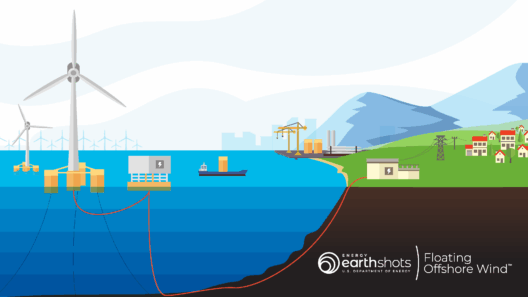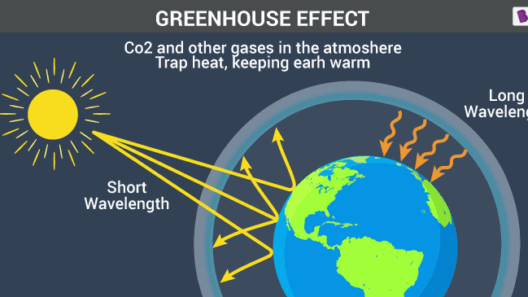The greenhouse effect has become an omnipresent topic within discussions about climate change, yet it is frequently perceived as an insurmountable issue. But what if we turned the tables? What if we transformed our current environmental trajectory through innovative solutions? Tackling global warming requires a multi-faceted approach that engages various stakeholders from governments and corporations to individuals and communities.
Understanding the greenhouse effect is paramount before we can contemplate solutions. It’s a natural process where certain gases in the Earth’s atmosphere trap heat, preventing it from escaping into space. However, human activities such as fossil fuel combustion drastically amplify this effect, leading to global warming. Now, let’s delve into actionable solutions that can help mitigate this pressing issue.
Now let’s pose a playful question: if we could have dinner with any three environmentalists—alive or historic—who would they be? What lessons would they impart to us regarding the methods to combat the greenhouse effect? The conversation could serve as a springboard for innovative, inspired solutions.
So, how do we embark on this mission? Let’s explore the various avenues available to us, recognizing that collaborative efforts are crucial.
Innovation in Renewable Energy Sources
One of the foremost solutions to combat climate change is the transition from fossil fuels to renewable energy sources. Solar, wind, hydroelectric, and geothermal energies present an environmentally friendly alternative that reduces greenhouse gas emissions. By investing in the proliferation of these technologies, countries can lessen their reliance on carbon-heavy energy sources.
Solar energy, for instance, has gained momentum in recent years. With advancements in photovoltaic technologies, solar panels are now more efficient and accessible than ever. Communities can harness sunlight not only to power homes but also to generate surplus energy, which can be stored or sold to the grid. The wind energy sector has similarly experienced growth; large-scale wind farms offer inexpensive and sustainable power solutions. Through incentives and subsidies, governments can accelerate the transition to these renewable sources.
Moreover, research into artificial photosynthesis is underway. This groundbreaking technology mimics the natural processes of plants to convert sunlight, water, and carbon dioxide into energy. It represents an enticing prospect for the future of energy generation.
Regulation and Policy Reform
Effective governmental policies are essential to mitigate climate change’s effects. Legislation that promotes sustainability and penalizes excessive greenhouse gas emissions can catalyze a cultural shift towards environmental responsibility. The implementation of carbon pricing is one such policy; it holds polluters accountable by charging them for their carbon emissions. These funds can then be reinvested into clean energy projects, public transport, and reforestation efforts.
International cooperation is equally crucial, as climate change transcends borders. Agreements like the Paris Accord encourage nations to set and achieve emission reduction targets. Such international treaties foster collaboration, allowing countries to share innovative technologies and best practices.
The Role of Urban Planning and Sustainable Architecture
The layout of our cities plays a pivotal role in emissions levels. Innovative urban planning can minimize carbon footprints through public transportation systems, walkable communities, and green spaces. Creating more bike lanes and pedestrian-friendly zones can also encourage eco-friendly commuting.
Additionally, sustainable architecture, employing energy-efficient designs, plays a critical role in reducing greenhouse emissions. Structures built with eco-friendly materials, energy-efficient appliances, and smart technologies can decrease energy consumption significantly. Retrofitting existing buildings to improve their energy efficiency is a worthwhile endeavor that yields immediate benefits.
Advocacy and Education: The Power of Knowledge
Education is the cornerstone of climate action. Informing the public about the implications of the greenhouse effect and the practical ways they can contribute to mitigating it is imperative. Grassroots movements and community engagement can drive change on a local level. Informational campaigns, workshops, and webinars can aid in raising awareness about sustainable practices.
Individuals have the power to influence change through conscious consumerism. Opting for locally sourced products, reducing single-use plastics, and supporting businesses that prioritize sustainability can collectively make a difference. Encourage local governments to adopt environmentally friendly practices by participating in community discussions and initiatives.
Addressing Climate Change through Agricultural Innovation
A significant contributor to greenhouse gas emissions is the agricultural sector. Adopting sustainable farming practices, such as crop rotation, regenerative agriculture, and permaculture, can minimize emissions while enhancing soil health. Innovation in this sector is crucial; research in vertical farming and aquaponics presents new opportunities for reducing land use and resource consumption. Additionally, utilizing technology to optimize water and nutrient usage can also lead to more sustainable agricultural practices.
In conclusion, the challenge of solving the greenhouse effect and addressing global warming may seem daunting, but it is not beyond our grasp. Through innovative energy solutions, robust policies, strategic urban planning, education, and sustainable agricultural practices, ample avenues exist for action. We must rally collectively, recognizing that every effort matters. With a committed mindset and collaborative spirit, we can pave the way for a sustainable future, allowing our planet to thrive. How will you contribute to this critical cause?








